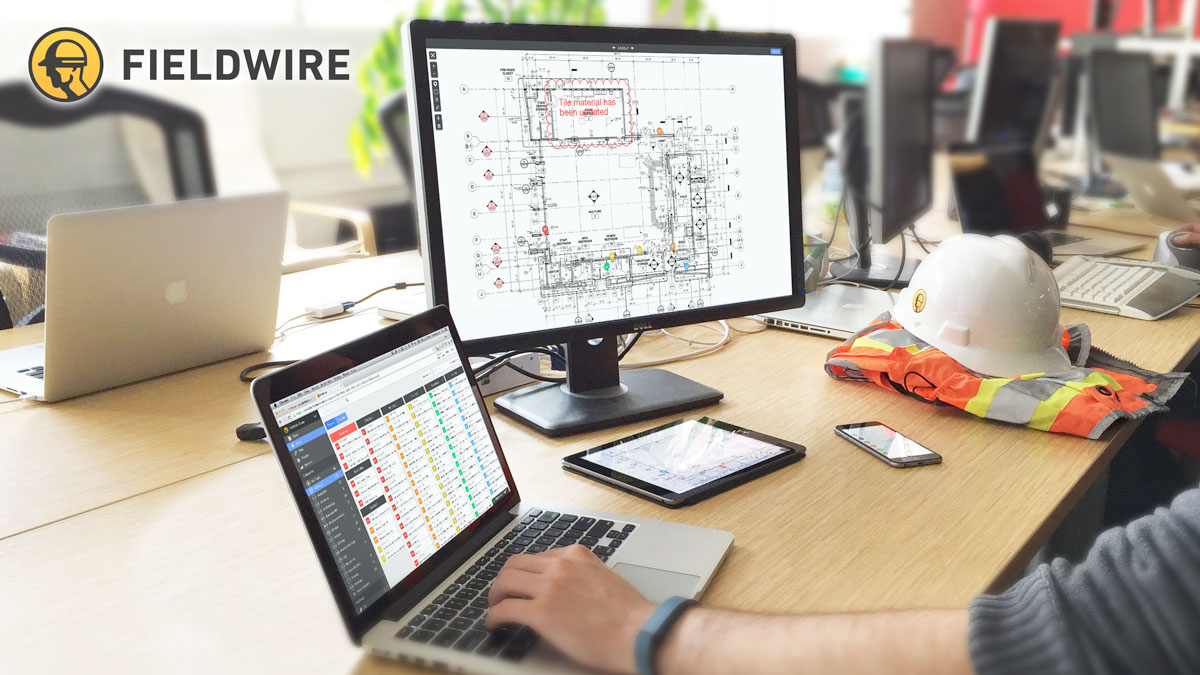This is my interview with Yves Frinault, Co-founder and CEO of Fieldwire. We discuss how mobile computing is helping construction, especially on the construction site.
Can you tell a little about your company, Fieldwire. Why and how did you come about, who are your customers, and where are you now, business-wise?
 Fieldwire is a mobile collaboration platform for the commercial construction industry. We help contractors run amazingly efficient field operations on their job-sites.
Fieldwire is a mobile collaboration platform for the commercial construction industry. We help contractors run amazingly efficient field operations on their job-sites.
While I was studying construction management at Stanford, I realized that almost all the technology in construction was focused on designing and planning a project. In contrast, very little was done to help the people actually doing the work on site. Having worked in the field before attending college, I knew that a good execution of the plan matters just as much as the plan itself and that there is potentially a huge cost associated to it. Fieldwire was created to give field teams the tools they need for fast tactical planning, making it easy to stay organized and adjust course on-site when there is an unforeseen condition.
We created Fieldwire in 2013 and after 2 years of growth, we have over 35,000 projects across 1,000 companies on the platform. Our customers include large general contractors like AECOM or Shimizu as well as smaller specialty contractors. The projects are mostly in English-speaking territories like the US, Canada, Australia or UK. Since we now localize in 7 languages we have started expanding in Europe and Asia as well.
You provide mobile solutions for the construction site. Can you give us a rundown on your products?
Fieldwire’s focus on execution starts from a simple equation: good foremen = good projects. Most of the operational efficiency on a project is generated at the foreman level. They are in direct contact with the operational environment and can therefore make precise adjustments to the plan. Our approach is to remove the tedious part of a foreman’s day so that he can focus on the value added part of his job. We basically take all the things that a foreman does 20 times a day and make them supper efficient through mobile technology:
- Plan viewing
- Issue reporting
- Scheduling tasks
- Creating reports
A lot of our technology is about making those seemingly simple things work perfectly in any environment (offline or with poor connectivity) regardless of the scale of the project. Our largest projects have 100s of users, 1,000s of plans and 10,000s of tasks on them. Those projects run on your smartphone or tablet just a quickly as if you were looking at a small $5m job.


How usable and beneficial is mobile technology at its present state in construction?
In a few short years, smartphone penetration has gone from zero to 70% in the general population. Everyone will soon have a smartphone in their pocket, not because they are tech savvy but because that’s going to be the only phone sold to them. Construction is no exception and in most countries we are reaching the point where almost every foreman carries a smartphone or a tablet.
While mobile technology is an enabler for everyone (from the architect to the the journeyman) it’s going to represent a fundamental game changer for the foreman. If you think about it, the personal computer has provided architects and engineers with a tremendous amount of leverage. The way we design and plan projects has progressed tremendously over the last 50 years. The way we manage our job-sites has not changed fundamentally over that period of time. Sadly, design and planning only represents about 10% of the cost of a project while 90% of cost of the project is still tied to the execution of that design and plan in the field.
With those numbers in mind, a mobile platform can solve two immediate problems on a large project:
- Connect all the subs together on a shared technology platform (having a standard process across the project)
- Save individual employees time every day through automation (you can for example schedule automated reports rather than assemble them by hand)
Those savings alone will represent quick net positive returns for their projects long before you start seeing the long term gains.
What are the main reasons that hold companies back from adopting new IM tools for construction and what would you advise them to do?
I am going to keep the discussion really focused on the IM applications targeted at the field:
- The first barrier to adoption is that companies have to feel comfortable with having a lot of information in the cloud. We are past that point with most companies but Box, Dropbox & Google had to work really hard to get us there.
- The second barrier is obviously mobile adoption on construction sites. As we discussed mobile adoption is coming from the outside of the industry and is happening on a very fast timeframe compared to what construction is used to. It’s happening with or without you so you might as well plan for it ahead of time.
- Adoption by the field crews remains the last barrier to adoption. We have written extensively about what makes technology successful on site and how to evaluate tools.
Surprisingly a lot of companies spend a large amount of time thinking about tech that is 5 to 10 years down the line and significantly less time thinking about what they can do now. While we can all get excited about a drone flying over a site or some excellent virtual reality goggles, it might be worth it to pay attention to a mission critical process that we are still running with paper and whiteboards.
My recommendation for companies:
- Experiment: Start small. Quickly pick a project and test out a technology on a sub-scope of a project. You will find very quickly who the contenders are. If it’s looking good, then ramp up usage and educate across projects.
- Get out of the office: The mobile revolution is not about features, intellectual positioning or even technology. It’s about identifying tools that can get widespread engagement across all your subs. So experiment and listen hard to what the crews are saying.
- Do an ROI calculation: At this point, you have a contender tool and actual feedback from the field. Now do a really honest ROI calculation. Compare the cost of running a project the old way VS the cost of running it with the tool you tested. Then decide if it’s worth it.
How do you see the future of mobile services in construction?
This year, bottom up mobile adoption has been the driving force behind app and field technology adoption on construction projects. Field personal have been able to download the apps they needed directly, allowing them to test and adopt new technology over shortened timeframes. In the next few years, the construction app market is going to move away from a multitude of simple apps towards more integrated apps designed to cover 90% of the use cases encountered on-site. The “field management” vertical that puts the foreman at the center is going to emerge more clearly as a necessary complement to traditional “construction management” technology.”
What are your company’s plans for the future?
Our mission is to continue to serve the field across the various verticals of the construction industry and further establish the company as the de-facto construction management platform for the job-site:
- From a product perspective, the goal is to become the interface between the project plan (in MS project or primavera) and the field. We have several on-going development partnerships to deliver on that promise.
- From a distribution perspective, we are expanding past the english speaking territories into other markets like Europe and Asia.
Where can we learn more about Fieldwire?
You can learn more about our construction management app on our blog or through our YouTube channel.
View the original article and our Inspiration here


Leave a Reply